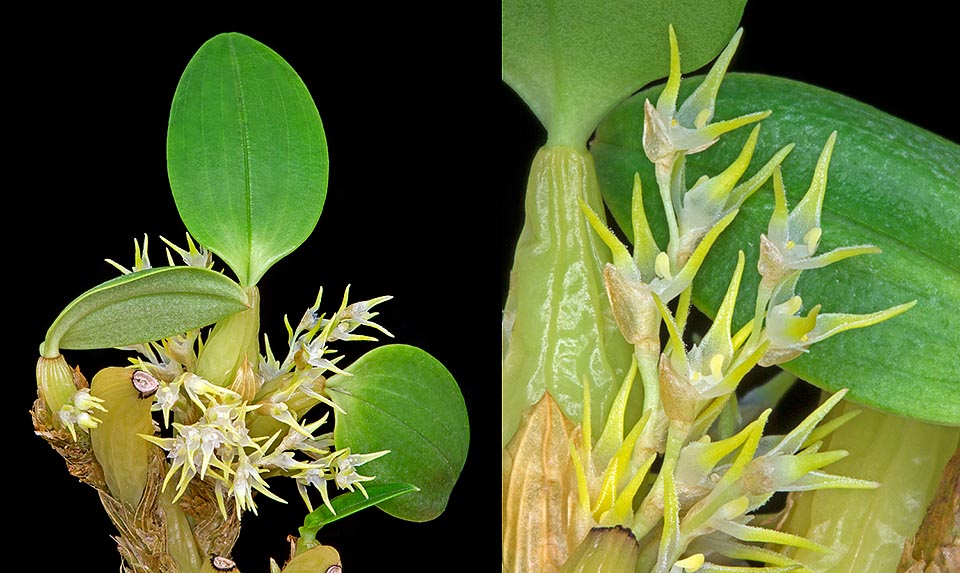Family : Orchidaceae

Text © Pietro Puccio

English translation by Mario Beltramini
The species is native to New Guinea where it grows on the trees of the humid forests from the sea level up to about 2000 m of altitude.
The name of the genus is the combination of the Greek substantives “βολβός” (bolbos) = bulb and “φύλλον” (phyllon) = leaf, with reference to the leaves growing at the apex of the pseudobulbs; the name of the species is the combination of the Latin adjectives “fractus, a, um” = broken, fractured and “flexus, a, um” = folded, curved, with reference to the zigzag progression of the rachis of the inflorescence.
The Bulbophyllum fractiflexum J.J.Sm. (1908) is an epiphytic species with hanging rhizome rooting at the nodes, sinuous, ramified, 35-90 cm long and of 1,5-3,5 mm of diameter, and ovoidal pseudobulbs, 1-3,2 cm long and of 0,5-1,5 cm of diameter, spaced of 0,5-9 cm. Ovate elliptical with acute apex leaves at the apex of the pseudobulb, 3-12 cm long and 0,6-4 cm long, coriaceous, of pale green colour. Basal inflorescences, on a 0,5-1 cm long peduncle, bearing some tiny flowers, with 2-2,5 mm long pedicel and ovary, of greenish white or yellowish white colour. Practically similar sepals, ovate with acuminate or caudate apex and margins often provided of small glandular hairs, 0,4-1 cm long and 1-2 mm broad, ovate-elliptical lateral petals with obtuse or acute apex with papillose margins, 1-2 mm long and 0,5-1 mm broad, ovate-elliptical labellum with obtuse apex, curved and concave at the base, 1-2 mm long and 0,5-1 mm broad and about 0,5 mm long column.

It reproduces by seed, in vitro, and by division, with each section provided of at least 3-4 pseudobulbs.
Species present in cultivation almost exclusively in botanic gardens and scientific institutions, requires the typical conditions of an intermediate greenhouse for orchids slightly shaded. During the growth period the waterings and the nebulizations must be frequent, more spaced during the vegetative rest, but without ever allowing the substratum to dry up completely, utilizing rain water, demineralized, or by reverse osmosis. It can be mounted on trunks or rafts covered by sphagnum or cultivated in pots or baskets with bark fragments, sphagnum and inerts.
The species is reported in the appendix II of CITES (species whose trade is internationally ruled).
Synonyms: Bulbophyllum effusum Schltr. (1913); Bulbophyllum fractiflexoides Schltr. (1913); Bulbophyllum genybrachium Schltr. (1913); Bulbophyllum lamprobulbon Schltr. (1913); Bulbophyllum linearipetalum J.J.Sm. (1929); Pelma fractiflexum (J.J.Sm.) Szlach. & Kulak (2007).
→ For general notions about ORCHIDACEAE please click here.
